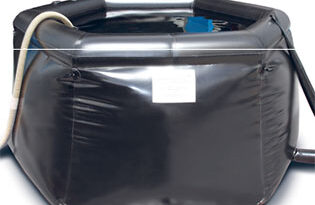Ergonomic Hand Splints For Your Fingers
Hand Splints For Your Fingers
Finger splints, also known as splints for your hand, are designed to immobilize either a single finger or all five fingers so it won’t get injured or swell. They’re most commonly used when there’s a loss of feeling or flexibility in the thumb, middle, or index finger of the hand because of an accident, frostbite, arthritis, or a broken bone. They help to alleviate pain by keeping the joint stiff and free of pinching tendons and muscles. They’re also helpful for small fractures, bruises, or sprains because they keep the healing process faster and more efficient. For more information click here to we what finger splints are available.
In addition to helping alleviate pain, they also help prevent further injury. A trigger finger can be severely injured and never find out about it unless they suffer nerve damage or chronic pain later in life. They also reduce the risk of arthritis and similar diseases that take years to develop if left untreated. Sprained joints and even torn ligaments can be treated with trigger finger splints. While they aren’t used every day, professional athletes and those doing physical therapy on a regular basis use them a great deal.
They are also frequently used by people who have injured their fingers in a sporting event or other kind of accident. Even people who don’t play sports or have an accident can get them. These splints are very helpful in situations where you’re unable to bend or flex your wrist due to injury. They’re also incredibly helpful for arthritis sufferers.
Trigger finger
You can use a splint for just about any injury and many people choose to wear them when working with their computers or wearing heavy gloves. They can fit comfortably over the course of a day and can provide support for any wrist pain that you experience. Many employers won’t allow their employees to wear them around the office or even at home because they believe that employees need to be able to use their wrists normally and shouldn’t have to wear a splint while doing so. However, studies show that Trigger finger support devices help reduce some types of pain, especially if the injury affects the thumb or forefinger.
Trigger finger supports also work well for arthritis sufferers. They fit comfortably over the course of a day and can provide support for stiffness and discomfort that can result from arthritis. They fit right behind the little finger and provide a good level of support while you bend and flex your hand. They can be worn in almost any situation and can often provide relief from stiffness and pain without having to use any medication.
Switching between a splint and a regular pillow or armchair is one of the things that many therapists do to treat trigger finger and bursitis (pain around the thumbs and fingers) problems. When the pain gets better, many people like to switch back to using their splints. While there are splints that you can buy, many times therapists and other healthcare practitioners will suggest using ergonomic hand splints instead, as these are designed to correct many common mistakes that people make when using their fingers and thumbs.
There are two types of splint available – a soft mallet type of device and a hard mallet type of device. The soft kind of splint is similar to a tennis racket and is often recommended for patients who are unable to place full force on the mallet to get the full effect. Because it fits directly over the joint, it provides a firm and constant point of support, rather than an elastic support that can easily break and give the finger added stiffness. The hard mallet, on the other hand, is used with a foot pedal similar to a bike pedal. These are often used with arthritis sufferers for whom other methods of treating the condition, such as physical therapy, may not work.
Finger splints come in various sizes and prices, depending on the amount of use that you get out of them. Most experts recommend that you use one for up to three weeks at a time, as the body tends to adjust to its new support system fairly quickly. It’s important that you follow the suggested usage instructions carefully, as some finger splint manufacturers suggest that the fingers are washed before and after use. For those who prefer to avoid washing their hands, there are also breathable neoprene versions of finger splints that allow the finger to breathe while they are worn.
Mallet finger is an injury to the end of your finger that causes it to bend inwards towards your palm.
A mallet finger, sometimes called “baseball finger” or drop finger, is caused by an injury to the tendon at the tip of the finger that causes the finger to stay bent and only be straightened with assistance.
How to apply a Mallet finger splint.



